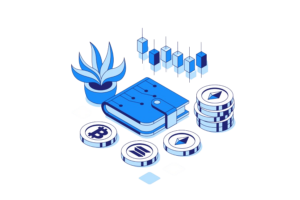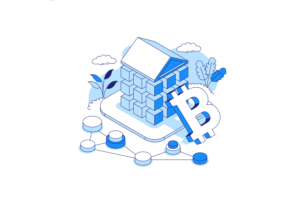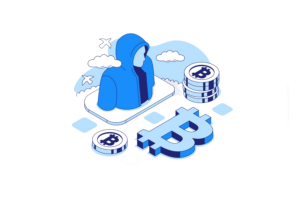Key Takeaways
- Cryptocurrencies play a crucial role in the metaverse, serving as the primary medium of exchange and facilitating transactions, decentralized finance applications, and ownership of digital assets
- Popular metaverse platforms utilizing cryptocurrencies include Decentraland, The Sandbox, Somnium Space, and Cryptovoxels
- Decentralized finance (DeFi) solutions in the metaverse include decentralized exchanges, lending and borrowing platforms, and yield farming or liquidity mining programs.
- Legal and regulatory considerations for metaverse-related cryptocurrency activities involve jurisdictional issues, intellectual property rights, and compliance with KYC and AML regulations.
- Virtual land ownership and virtual economies in the metaverse create new opportunities for users and businesses, as they exchange goods, services, and digital assets, such as in-game items, virtual real estate, and NFTs.
- Technological advancements, such as VR, AR, AI, and ML, will shape the future of the metaverse and influence the way users interact with virtual worlds.
- Environmental concerns related to energy consumption and sustainability are important considerations for metaverse-related cryptocurrency activities
- Cybersecurity threats, including hacking, data breaches, and privacy concerns, pose challenges for the metaverse and cryptocurrency ecosystem.
- The metaverse and cryptocurrencies are expected to play a significant role in the future of digital economies, driving innovation, new business models, and global economic inclusion.
- Navigating potential challenges and capitalizing on emerging trends will be essential for the continued growth and success of the metaverse and its associated cryptocurrency ecosystem.
Defining the Metaverse
Envision a digital universe, interconnected and brimming with infinite possibilities, where users converge to communicate, play, explore, and transact. This intricate and expansive realm is known as the metaverse. Blending the physical and virtual dimensions, the metaverse transcends the traditional boundaries of the internet, offering immersive experiences that redefine the way people engage with digital content.
Several key characteristics set the metaverse apart from other digital environments:
- Persistent: The metaverse remains operational around the clock, irrespective of individual users’ presence or absence. Consequently, events, interactions, and changes within the metaverse persist over time, fostering a dynamic environment.
- Synchronous and live: In the metaverse, users from all corners of the globe can interact simultaneously in real time. This interconnectedness facilitates vibrant exchanges of ideas, trade, and entertainment, much like the physical world.
- Immersive: Utilizing cutting-edge technologies like virtual reality (VR) and augmented reality (AR), the metaverse offers fully immersive experiences that engage multiple senses, creating realistic environments that captivate users.
- User-generated content: The metaverse thrives on its community’s creativity. Empowering users to design and develop their unique virtual spaces, items, and experiences enriches the metaverse’s diversity and fosters innovation.
- Economy: Integral to the metaverse is its thriving virtual economy, where users can own, buy, sell, and trade digital assets using cryptocurrencies. This economic system underpins a myriad of activities, from virtual land ownership to digital goods and services
The history and Emergence of the Metaverse
As we journey back in time, we’ll discover that virtual worlds have been gradually evolving for decades. The inception of these digital realms can be traced back to the 1970s and 1980s with the creation of text-based Multi-User Dungeons (MUDs). Pioneers in their own right, MUDs facilitated interactions among players in a shared environment, marking the first steps towards the metaverse concept.
Precursors to the Metaverse
In the 1990s and early 2000s, advancements in technology led to the birth of Massively Multiplayer Online (MMO) games. Titles like Ultima Online, EverQuest, and World of Warcraft captivated millions of players with their expansive, immersive worlds that allowed for social interaction and collaboration. While these virtual environments were precursors to the metaverse, they remained confined within the boundaries of their respective games.
Recent Developments
Fast forward to recent years, and we witness the rapid rise of social VR platforms like VRChat, Rec Room, and AltspaceVR, which bring users together in shared virtual spaces. With the integration of cutting-edge technologies such as virtual reality, augmented reality, and blockchain, the metaverse has started taking shape as an expansive, interconnected digital universe.
Technology has been the driving force behind the growth of the metaverse. The proliferation of high-speed internet and the accessibility of advanced computing devices have made it possible for users to engage with immersive, interactive digital environments. Advancements in blockchain technology have also enabled the tokenization and decentralization of digital assets, paving the way for secure, transparent transactions within the metaverse.
The metaverse has come a long way from the early days of text-based MUDs. As technology continues to evolve and reshape the digital landscape, the metaverse stands poised to revolutionize the way we interact, work, and entertain ourselves in the virtual realm
Cryptocurrency in the Metaverse
Cryptocurrencies play a vital role in the metaverse, fostering economic growth and enabling seamless transactions in a decentralized, secure manner. As digital currencies, they are uniquely suited to facilitate trade, commerce, and ownership within virtual environments.
Why cryptocurrencies are essential for the Metaverse
Cryptocurrencies offer several advantages that make them indispensable to the metaverse:
- Decentralization: Cryptocurrencies, powered by blockchain technology, operate on decentralized networks, ensuring that no single entity has control over the virtual economy. This aspect promotes fairness, trust, and transparency within the metaverse.
- Security: Cryptocurrency transactions rely on cryptographic principles, providing a high level of security and mitigating the risk of fraud and manipulation.
- Cross-platform compatibility: Cryptocurrencies enable the transfer of value across different virtual platforms and environments, fostering interconnectedness within the metaverse.
- Programmable money: Smart contracts and programmable tokens can be used to create complex economic systems, automate transactions, and facilitate innovative applications in the metaverse.
Types of cryptocurrencies used in the Metaverse
A variety of cryptocurrencies are utilized within the metaverse, each serving unique purposes and catering to specific platforms. Some prominent examples include:
- Platform-specific tokens: Decentraland’s MANA, The Sandbox’s SAND, and Somnium Space’s CUBE are native tokens for their respective platforms, allowing users to buy virtual land, assets, and access platform-specific services.
- General-purpose cryptocurrencies: Ethereum (ETH), Bitcoin (BTC), and other popular cryptocurrencies can be used for transactions across multiple metaverse platforms and services.
Tokenization of virtual assets
Tokenization is the process of converting virtual assets into digital tokens on a blockchain. This allows for the creation, ownership, and trading of unique digital items, known as non-fungible tokens (NFTs). NFTs can represent virtual land, in-game items, artwork, and more, enabling users to truly own, trade, and monetize their virtual creations within the metaverse.
Cryptocurrencies are an integral component of the metaverse, providing the backbone for its burgeoning virtual economy. With the adoption of digital currencies, the metaverse continues to expand and evolve, offering new opportunities for users to engage with virtual worlds and one another.
Popular Metaverse Platforms utilizing Cryptocurrencies
As the metaverse continues to gain momentum, various platforms are emerging that leverage cryptocurrencies for transactions, virtual asset ownership, and platform-specific services. Let’s explore four notable metaverse platforms and the cryptocurrencies they employ:
Decentraland (MANA)
Decentraland is a decentralized, user-owned virtual world built on the Ethereum blockchain. Its native token, MANA, fuels the platform’s economy, enabling users to purchase virtual land, known as LAND, and participate in the platform’s governance through the Decentraland DAO. Users can also create, trade, and monetize digital assets, such as wearables and virtual real estate, using MANA.
The Sandbox (SAND)
The Sandbox is a community-driven virtual platform that empowers users to create, own, and monetize their gaming experiences. Built on Ethereum, The Sandbox utilizes its native token, SAND, for transactions, governance, and staking. Users can buy virtual land (LAND), create interactive content, and trade assets as non-fungible tokens (NFTs) within the platform’s ecosystem.
Somnium Space (CUBE)
Somnium Space is an open, persistent VR world that offers users a platform for social interaction, exploration, and content creation. It runs on the Ethereum blockchain and employs CUBE, its native cryptocurrency, for transactions and platform-specific services. Users can purchase virtual land parcels, build custom environments, and participate in various in-world events using CUBE tokens.
Cryptovoxels (ETH)
Cryptovoxels is a user-generated virtual world built on the Ethereum blockchain, where users can create, explore, and trade voxel-based structures and art. Unlike the other platforms, Cryptovoxels does not have its own native token; instead, it uses Ethereum (ETH) for transactions and asset ownership. Users can acquire virtual land, known as parcels, and create custom buildings, galleries, or interactive experiences using ETH.
These popular metaverse platforms showcase the powerful role cryptocurrencies play in shaping virtual economies and enabling users to engage with digital worlds in new and innovative ways. As the metaverse evolves, we can expect to see even more platforms emerge, leveraging cryptocurrencies to empower their communities and redefine the boundaries of digital experiences.
The Economics of the Metaverse
As the metaverse expands and evolves, it gives rise to a thriving digital economy that encompasses various aspects, such as virtual land ownership, digital goods and services, and advertising. Let’s delve into these components and understand their significance in the metaverse.
Virtual land ownership and its implications
Owning virtual land within the metaverse has become a valuable and sought-after commodity. Users can purchase, develop, and monetize their digital real estate in several ways:
- Customization: Landowners can build unique structures, galleries, or interactive experiences on their virtual land, attracting other users and enhancing the overall value of their property.
- Rental: Virtual land can be leased to other users or businesses for various purposes, generating a passive income stream for landowners.
- Appreciation: As the metaverse grows and attracts more users, the demand for virtual land increases, potentially leading to appreciation in value and providing opportunities for landowners to sell at a profit.
Virtual goods and services
The metaverse is a breeding ground for digital goods and services, enabling users to create, trade, and monetize a wide range of virtual assets:
- Digital items: Non-fungible tokens (NFTs) representing in-game items, wearables, or virtual art can be bought, sold, or traded among users, fueling a vibrant digital marketplace.
- Services: Skilled users can offer their expertise in various fields, such as virtual event planning, content creation, or asset development, in exchange for cryptocurrency payments.
- Entertainment and experiences: Users can host or participate in social events, concerts, and virtual gatherings, generating new revenue streams and fostering a lively metaverse culture.
Digital advertising in the Metaverse
The metaverse presents a unique opportunity for brands and advertisers to reach their target audience in innovative ways:
- Immersive ads: Advertisers can create interactive, engaging advertisements within the metaverse that blend seamlessly into the virtual environment.
- Sponsored content: Brands can sponsor virtual events, spaces, or experiences, offering users exclusive access or benefits in exchange for exposure and engagement.
- Influencer partnerships: Collaborating with prominent metaverse users can help brands reach new audiences and increase their visibility within the virtual world.
The economics of the metaverse encompass a diverse array of elements that collectively contribute to a burgeoning digital economy. As more users and businesses venture into the metaverse, the opportunities for economic growth and innovation will continue to multiply, shaping the future of virtual commerce and interaction.
Decentralized Finance (DeFi) in the Metaverse
The metaverse is witnessing the integration of decentralized finance (DeFi) solutions, fostering economic growth and innovation within virtual environments. DeFi applications such as decentralized exchanges, lending and borrowing platforms, and yield farming opportunities are finding their place in the metaverse, further expanding the virtual economy’s possibilities. Let’s explore these DeFi components and their roles in the metaverse.
Decentralized exchanges (DEXs) and their role in the Metaverse
Decentralized exchanges (DEXs) are essential for facilitating cryptocurrency transactions within the metaverse. Unlike traditional, centralized exchanges, DEXs operate without a central authority and provide users with increased security, privacy, and control over their assets. In the metaverse, DEXs enable:
- Cross-platform trading: Users can trade cryptocurrencies, tokens, and NFTs across different metaverse platforms and environments, enhancing liquidity and fostering interconnectedness.
- Permissionless access: DEXs offer open, censorship-resistant access to users, allowing them to trade virtual assets without restrictions or intermediaries.
- Lower costs: By eliminating central authorities, DEXs can offer reduced fees and more competitive rates for users trading virtual assets within the metaverse.
Lending and borrowing platforms for virtual assets
DeFi lending and borrowing platforms are extending their services to virtual assets in the metaverse. Users can lend their cryptocurrencies, NFTs, or virtual land and earn interest, while borrowers can access these assets for various purposes. Some benefits of lending and borrowing platforms in the metaverse include:
- Monetization: Users can monetize their virtual assets by lending them out and earning interest, generating passive income streams.
- Flexibility: Borrowers can access virtual assets for short-term use, such as participating in events, renting virtual land, or experimenting with digital goods and services.
- Collateralization: Virtual assets can be used as collateral for loans, enabling users to unlock additional value from their digital holdings.
Yield farming and liquidity mining in the metaverse
Yield farming and liquidity mining are popular DeFi strategies that incentivize users to supply liquidity to various platforms in exchange for rewards. In the metaverse, these strategies can drive economic growth and facilitate token distribution by:
- Incentivizing participation: Users are encouraged to contribute their assets to metaverse platforms or services, fostering engagement and adoption.
- Supporting liquidity: Yield farming and liquidity mining help maintain robust liquidity pools, ensuring smooth transactions and price stability within the metaverse.
- Community governance: Reward tokens can often grant users governance rights, allowing them to participate in decision-making processes and contribute to the metaverse’s evolution.
DeFi applications are finding their way into the metaverse, creating new opportunities for users and businesses to engage with digital assets, generate income, and participate in the virtual economy. As DeFi and the metaverse continue to grow and intersect, we can expect even more innovative financial solutions to emerge, further blurring the lines between the digital and physical worlds.
Legal and Regulatory Aspects of Metaverse and Cryptocurrencies
The metaverse and its relationship with cryptocurrencies bring forth a multitude of legal and regulatory challenges. As these virtual worlds continue to grow, the need for clarity and guidelines becomes increasingly important. This section will delve into jurisdictional issues, intellectual property rights, and compliance concerns related to the metaverse and cryptocurrencies.
Jurisdictional Issues in the Metaverse
The global and decentralized nature of the metaverse raises questions about jurisdiction and the application of laws:
- Determining jurisdiction: Identifying the appropriate jurisdiction for disputes or legal matters within the metaverse can be complex, as users, platforms, and assets often span multiple countries and legal systems.
- Applying laws: The enforcement of laws and regulations in the metaverse may require new approaches or the development of international agreements to ensure consistent treatment across borders.
- Conflict resolution: Resolving disputes between users, platforms, or other stakeholders in the metaverse may necessitate novel dispute resolution mechanisms or the adaptation of existing legal frameworks.
Intellectual property rights and virtual assets
As virtual assets become increasingly valuable, the issue of intellectual property (IP) rights within the metaverse comes to the forefront:
- Ownership and control: Determining the rightful owner and controller of digital assets, such as NFTs, virtual land, or in-game items, can be challenging and may require the application or modification of existing IP laws.
- Infringement and enforcement: Addressing instances of IP infringement in the metaverse may necessitate new enforcement mechanisms or collaboration between platforms to ensure the protection of creators’ rights.
- Licensing and royalties: Establishing systems for the licensing and payment of royalties for virtual assets can help promote a fair and sustainable ecosystem for content creators and IP holders within the metaverse.
KYC/AML compliance and privacy concerns
As cryptocurrencies play a significant role in the metaverse economy, complying with Know Your Customer (KYC) and Anti-Money Laundering (AML) regulations becomes crucial. Additionally, privacy concerns arise as users interact within the virtual world:
- Identity verification: Implementing KYC procedures for users engaging in cryptocurrency transactions within the metaverse may be necessary to ensure compliance with regulatory requirements and prevent illicit activities.
- Transaction monitoring: Monitoring cryptocurrency transactions and reporting suspicious activities in the metaverse can help combat money laundering, terrorist financing, and other illegal activities.
- Data privacy: Protecting users’ personal information and ensuring privacy within the metaverse is essential for fostering trust and maintaining compliance with data protection laws, such as GDPR.
The legal and regulatory aspects of the metaverse and cryptocurrencies present a complex landscape that will require ongoing attention and adaptation. As the metaverse continues to develop, it is crucial for stakeholders, policymakers, and legal experts to collaborate and establish a robust, fair, and sustainable regulatory framework that supports innovation while safeguarding the rights and interests of users and businesses.
Future Trends and Potential Challenges
As the metaverse and its relationship with cryptocurrencies continue to evolve, we can expect new trends and challenges to emerge. This section will explore technological advancements shaping the metaverse, the environmental impact of metaverse-related cryptocurrency activities, and potential cybersecurity threats.
Technological advancements shaping the Metaverse
Innovations in technology will play a significant role in the growth and development of the metaverse:
- Virtual Reality (VR) and Augmented Reality (AR): The widespread adoption of VR and AR technologies will enhance the immersiveness and interactivity of the metaverse, creating richer experiences and fostering deeper user engagement.
- Artificial Intelligence (AI) and Machine Learning (ML): AI and ML technologies can be used to develop intelligent virtual characters, dynamic environments, and personalized experiences within the metaverse, making it more lifelike and engaging.
- Interoperability and cross-platform collaboration: As the metaverse expands, we may see increased efforts to create interconnected, cross-platform virtual worlds, allowing users and digital assets to seamlessly move between different environments.
Environmental impact of metaverse-related cryptocurrency activities
Cryptocurrency-related activities, particularly those involving energy-intensive proof-of-work (PoW) consensus mechanisms, can have environmental implications:
- Energy consumption: PoW-based cryptocurrencies, such as Bitcoin and Ethereum, can consume significant amounts of electricity, contributing to greenhouse gas emissions and raising concerns about the environmental impact of metaverse-related cryptocurrency activities.
- Transition to greener alternatives: The metaverse ecosystem may push for the adoption of more energy-efficient consensus mechanisms, such as proof-of-stake (PoS) or delegated proof-of-stake (DPoS), to mitigate environmental concerns and promote sustainability.
- Carbon offset initiatives: Cryptocurrency projects and metaverse platforms may invest in carbon offset initiatives or renewable energy sources to reduce their environmental footprint and promote a greener virtual economy.
Cybersecurity Threats and potential mitigations
As the metaverse and cryptocurrencies gain popularity, they may also attract cybercriminals, leading to potential security threats:
- Hacking and data breaches: Cyberattacks targeting metaverse platforms or cryptocurrency wallets can result in data breaches or the theft of digital assets, highlighting the need for robust security measures and best practices.
- Scams and fraud: Users may encounter scams, phishing attempts, or fraudulent schemes within the metaverse, necessitating increased awareness and education about potential risks and red flags.
- Privacy and surveillance: Ensuring user privacy and protection from unauthorized surveillance within the metaverse will be crucial for maintaining trust and security in the virtual world.
The future of the metaverse and its connection to cryptocurrencies will be shaped by technological advancements, environmental considerations, and cybersecurity challenges. Navigating these trends and addressing potential issues will be vital for the long-term success and sustainability of the metaverse ecosystem.
Final Thoughts
The metaverse and cryptocurrencies have become inextricably linked, with digital currencies playing a pivotal role in shaping virtual economies and enabling users to participate in various activities. As these digital worlds continue to expand, they will likely play an increasingly significant role in the broader digital economy.
The intertwined relationship between the metaverse and cryptocurrencies
Cryptocurrencies have become the lifeblood of the metaverse, facilitating transactions, enabling decentralized finance applications, and providing a means for users to own and trade virtual assets. This symbiotic relationship has fueled the growth of both the metaverse and cryptocurrency ecosystems, with each driving innovation and adoption in the other.
- Cryptocurrencies as the medium of exchange: Digital currencies have emerged as the primary medium of exchange in the metaverse, allowing users to buy, sell, and trade virtual goods and services seamlessly across different platforms and environments.
- Tokenization and NFTs: The tokenization of virtual assets, such as non-fungible tokens (NFTs), has opened up new possibilities for digital ownership, enabling users to buy, sell, and trade unique items within the metaverse.
- DeFi applications: The integration of decentralized finance (DeFi) solutions into the metaverse has created new opportunities for users to access financial services, generate income, and engage with digital assets in novel ways.
The significance of the metaverse for the future of digital economies
As the metaverse continues to evolve, its impact on the future of digital economies will become increasingly apparent:
- New business models: The metaverse offers innovative ways for businesses to reach customers, deliver goods and services, and monetize digital assets, driving the creation of new business models and revenue streams.
- Global economic inclusion: By providing a borderless, decentralized, and accessible platform for economic activity, the metaverse has the potential to foster greater financial inclusion and participation in the digital economy, particularly for those in underserved or unbanked regions.
- Digital transformation: The metaverse will likely play a critical role in the ongoing digital transformation of industries and sectors, as businesses and organizations adopt virtual reality, augmented reality, and other advanced technologies to innovate and adapt to the changing landscape.
The metaverse and cryptocurrencies are shaping the future of digital economies, forging a new frontier of interconnected virtual worlds and decentralized financial services. As we look ahead, the potential of the metaverse to transform industries, foster innovation, and create new opportunities for users and businesses alike is truly remarkable. Embracing and navigating the challenges and opportunities presented by the metaverse will be essential for those looking to thrive in the digital age.
Metaverse FAQs
How are cryptocurrencies used in the metaverse?
Cryptocurrencies serve as the primary medium of exchange for transactions within the metaverse. They enable users to buy, sell, and trade virtual goods and services, as well as participate in decentralized finance applications and own digital assets like non-fungible tokens (NFTs).
What are some popular metaverse platforms that use cryptocurrencies?
Popular metaverse platforms that use cryptocurrencies include Decentraland (MANA), The Sandbox (SAND), Somnium Space (CUBE), and Cryptovoxels (ETH). These platforms often have their own native tokens or support various digital currencies for transactions within their virtual worlds.
How does decentralized finance (DeFi) operate in the metaverse?
DeFi in the metaverse operates through various applications, such as decentralized exchanges (DEXs), lending and borrowing platforms, and yield farming or liquidity mining programs. These DeFi solutions enable users to access financial services, trade virtual assets, and generate income within the virtual world.
What are the legal and regulatory considerations for metaverse-related cryptocurrency activities?
Legal and regulatory considerations for metaverse-related cryptocurrency activities include jurisdictional issues, intellectual property rights for virtual assets, and compliance with Know Your Customer (KYC) and Anti-Money Laundering (AML) regulations. Addressing these concerns will be crucial for maintaining trust and ensuring the long-term sustainability of the metaverse ecosystem.
How do virtual land ownership and virtual economies function in the metaverse?
Virtual land ownership in the metaverse often involves the purchase, sale, or leasing of digital parcels of land, which can be developed, monetized, or used to host various activities. Virtual economies within the metaverse are fueled by the exchange of goods, services, and digital assets, such as in-game items, virtual real estate, and NFTs, often using cryptocurrencies as the primary medium of exchange.
What potential challenges and future trends exist for the metaverse and cryptocurrencies?
Potential challenges and future trends for the metaverse and cryptocurrencies include technological advancements, such as VR, AR, AI, and ML, environmental impact related to energy consumption and sustainability, and cybersecurity threats like hacking, data breaches, and privacy concerns. Navigating these challenges and capitalizing on emerging trends will be essential for the continued growth and success of the metaverse and its associated cryptocurrency ecosystem.





